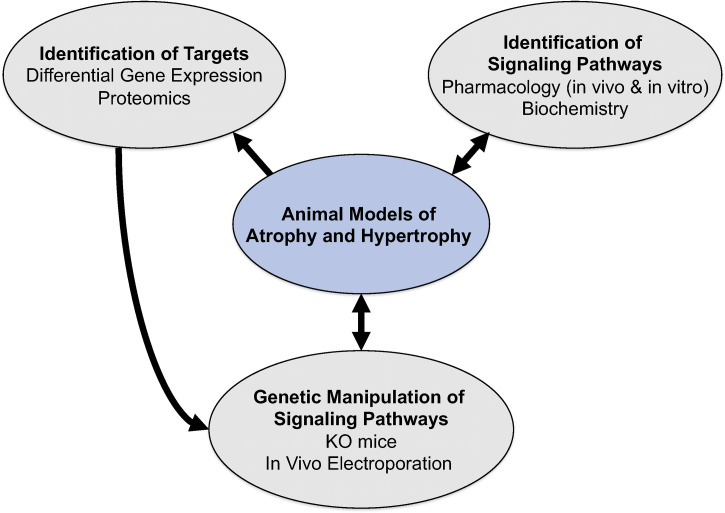Fig. 3.
Building a multidisciplinary muscle research program. A multidisciplinary research program was developed to discover novel mechanisms regulating skeletal muscle size. At the center of the program was the establishment of animal models of skeletal muscle atrophy (denervation, nerve crush-reinnervation, joint immobilization, hindlimb suspension, glucocorticoid excess) and hypertrophy (functional overload, reloading following disuse). Muscle tissues taken at different time points were used in the identification of novel gene and protein targets using differential gene expression and proteomics approaches. Muscle samples were also used to identify signaling pathways that were altered in response to stimuli that induced atrophy and hypertrophy. Furthermore, pharmacological agents, such as clenbuterol, IGF1, rapamycin, glucocorticoids, were utilized both in vivo and in vitro to manipulate selective pathways to induce changes in muscle size. Finally, technologies such as in vivo electroporation and mouse genetic engineering were utilized to modify gene expression in skeletal muscle.

